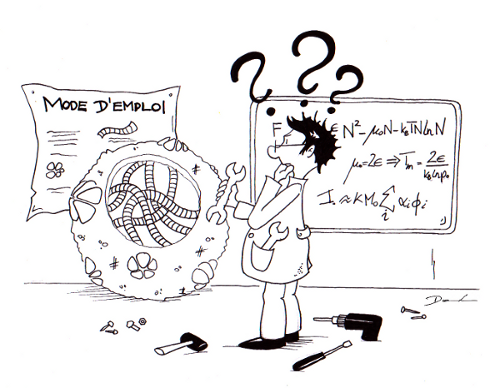VIROPHYSICS
Viruses combine remarkable structural and functional properties unmatched by present-day synthetic systems. Despite a huge body of work dedicated to the molecular biology of viral life cycles, the ability of viruses to self-assemble still defies theoretical understanding. There are currently no physical models accounting reliably for the dynamic pathways along which the hundreds of molecular building blocks making up a virus fit into the final structure with a pinpoint accuracy. Our goal is therefore to better understand the dynamical processes underlying the assembly and self-organization phenomena in viruses by exploiting the experimental and theoretical concepts used in soft matter and statistical physics.

- Non-equilibrium dynamics of assembly/disassembly processes
- Virus-like particles
- The pressurized bacteriophage chromosome
CONDENSED DNA & CHROMATIN
In vivo, in viral capsid, bacterial and eukaryotic chromosomes, DNA is always packaged into compact forms that vary in space and time, with cell cycle, DNA repair, or gene expression. We explore self-assembly phenomena of DNA and chromatin both in situ and in vitro. Our approach relies on concepts and tools from liquid crystal, polymer and polyelectrolyte physics, and structural biology.
EXPERIMENTAL APPROACHES
We develop the methods necessary :
- to follow the dynamics of our systems (time-resolved SAXS, light scattering, fluorescence microscopy), including in microfluidic devices
- to image individual molecules and nano-objects in solution (cryo electron microscopy)
- to image cells and bulk materials by cryo electron microscopy of vitreous sections (CEMOVIS)
We also take advantage of large-scale facilities to explore soft matter at the nanoscale :
- Soleil synchrotron (Gif-sur-Yvette) : small-angle x-ray scattering on the SWING beamline.
- European Synchrotron Radiation Facilities (ESRF, Grenoble) : small-angle x-ray scattering on the ID02 beamline.
- Institute Laue Langevin (ILL, Grenoble) : small-angle neutron scattering on the D22 beamline.
